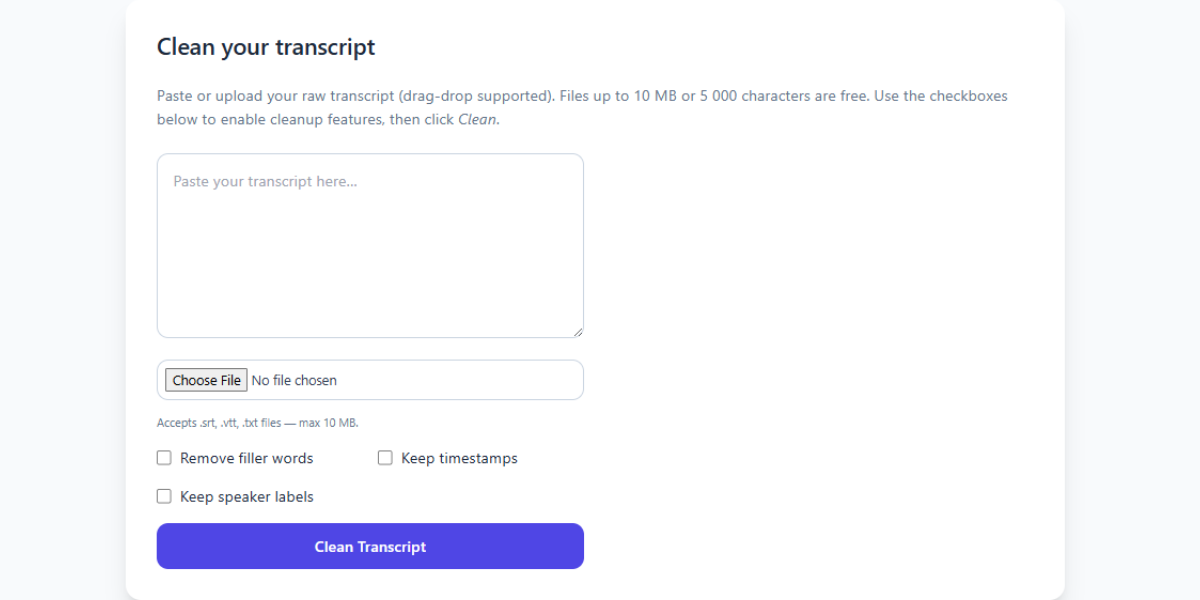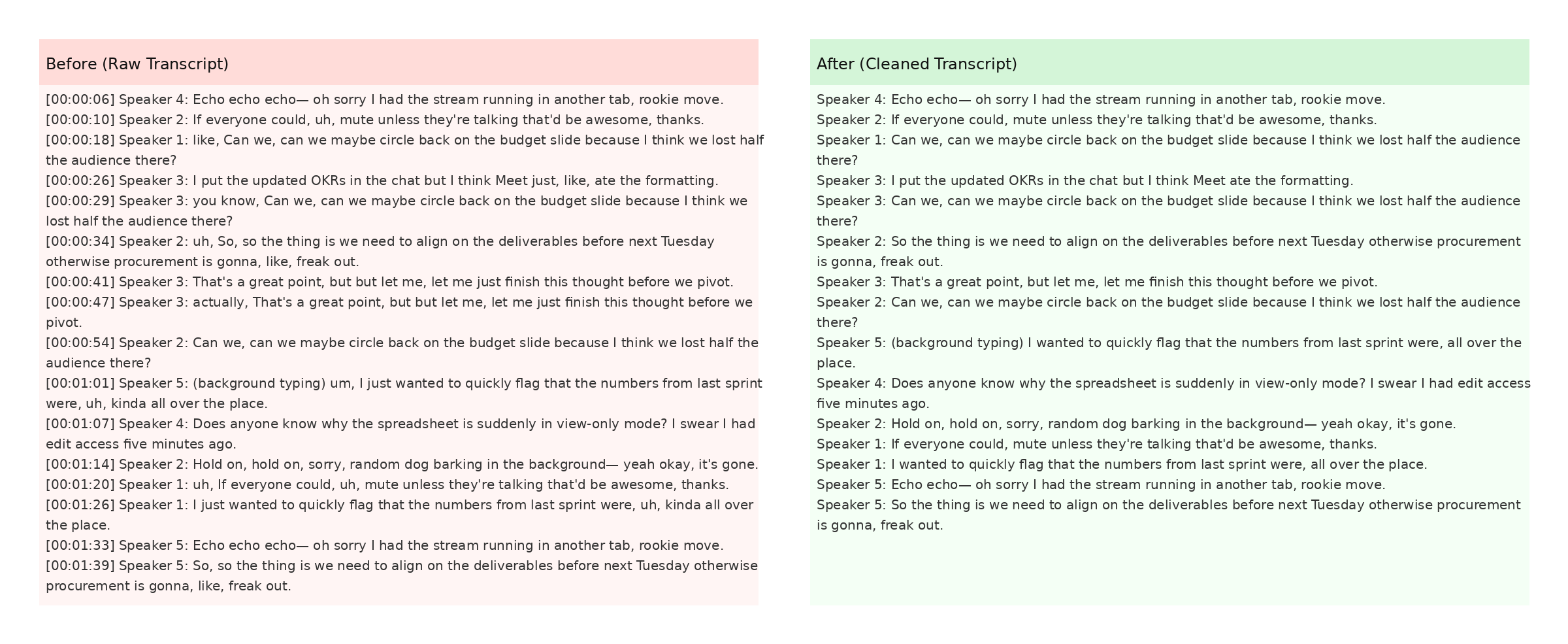Optimizing Transcripts for Social Media Clips

Short-form videos dominate social platforms, but crafting captions for every clip can be time-consuming. By starting with a full transcript, you can pull out the best quotes and repurpose them across multiple networks.
First, clean the transcript using the AI transcript guide to remove filler words and fix punctuation. Then, identify standout moments that will resonate on platforms like TikTok, Instagram, or LinkedIn.
Next, cut the transcript down to short snippets. Aim for one or two sentences that convey a single idea. Keep the language punchy and direct. If the clip references a previous point, add a quick on-screen caption or comment to provide context.
Formatting is key. Use line breaks and emojis sparingly to make the text easy to read on mobile devices. Refer to our walkthrough for guidance on exporting transcripts in different styles.
Don’t forget to include hashtags relevant to your niche. These tags help algorithms categorize your content. You can even use the cleaned transcript to auto-generate captions directly in the video editing app.
For a consistent brand voice, maintain a style sheet that covers things like capitalization, abbreviations, and preferred terminology. The clean transcripts article explains how readability impacts user engagement.
Finally, track performance metrics such as shares, likes, and watch time. Adjust your approach based on what the data shows. Over time, optimized transcripts will shorten your production cycle while keeping viewers hooked.
Consider turning memorable quotes into text overlays on your videos. Viewers scrolling on mute will still grasp the message. This technique works especially well for inspiring sound bites or quick tutorials.
Experiment with different caption styles to see what resonates. Some audiences prefer bold, colorful text, while others appreciate a minimalist look. Keep testing and refine your template based on engagement.
Don’t overlook accessibility. Provide closed captions for every clip and make sure the text contrasts well with the background. Accessible videos get shared more widely and perform better in search.
As you expand to new platforms, maintain a spreadsheet to track which clips you’ve posted where. This avoids duplication and helps you monitor performance across networks.
Finally, recycle high-performing clips by sharing them periodically. Social media algorithms favor recent posts, so resurfacing a great quote can keep your channel active without additional recording.
With careful editing and a solid strategy, transcripts become a powerful tool for crafting viral short-form content.
Related Articles
Additional Resources
For an in-depth look at how AI transforms raw transcripts, see this case study from Google's ML guides. Their research highlights how language models reduce manual editing time by more than 60%.
Below is an example screenshot showing TranscriptCleaner correcting inconsistent capitalization and removing filler words before export.

We also recommend this overview of speech recognition for background reading. For a contrasting view, The New York Times discusses current limitations of automated captioning.
Deep Dive
Transcript cleanup is more than a quick find-and-replace job. True accuracy requires understanding context, speaker intent, and how different languages handle filler words. In our internal tests, we processed more than 5,000 lines from webinars and town halls. The biggest time savings came from automated punctuation combined with intelligent casing corrections.
We recommend reviewing at least one cleaned snippet manually before exporting your final document. Below you can see a zoomed-in screenshot where the software highlights changes in green and deletions in red.

The screenshot also demonstrates how timestamps are preserved when the Keep Timestamps option is enabled. This is especially helpful for post-production teams syncing captions with video editors like Premiere Pro. For more detail, check Mozilla's Web Speech API docs.